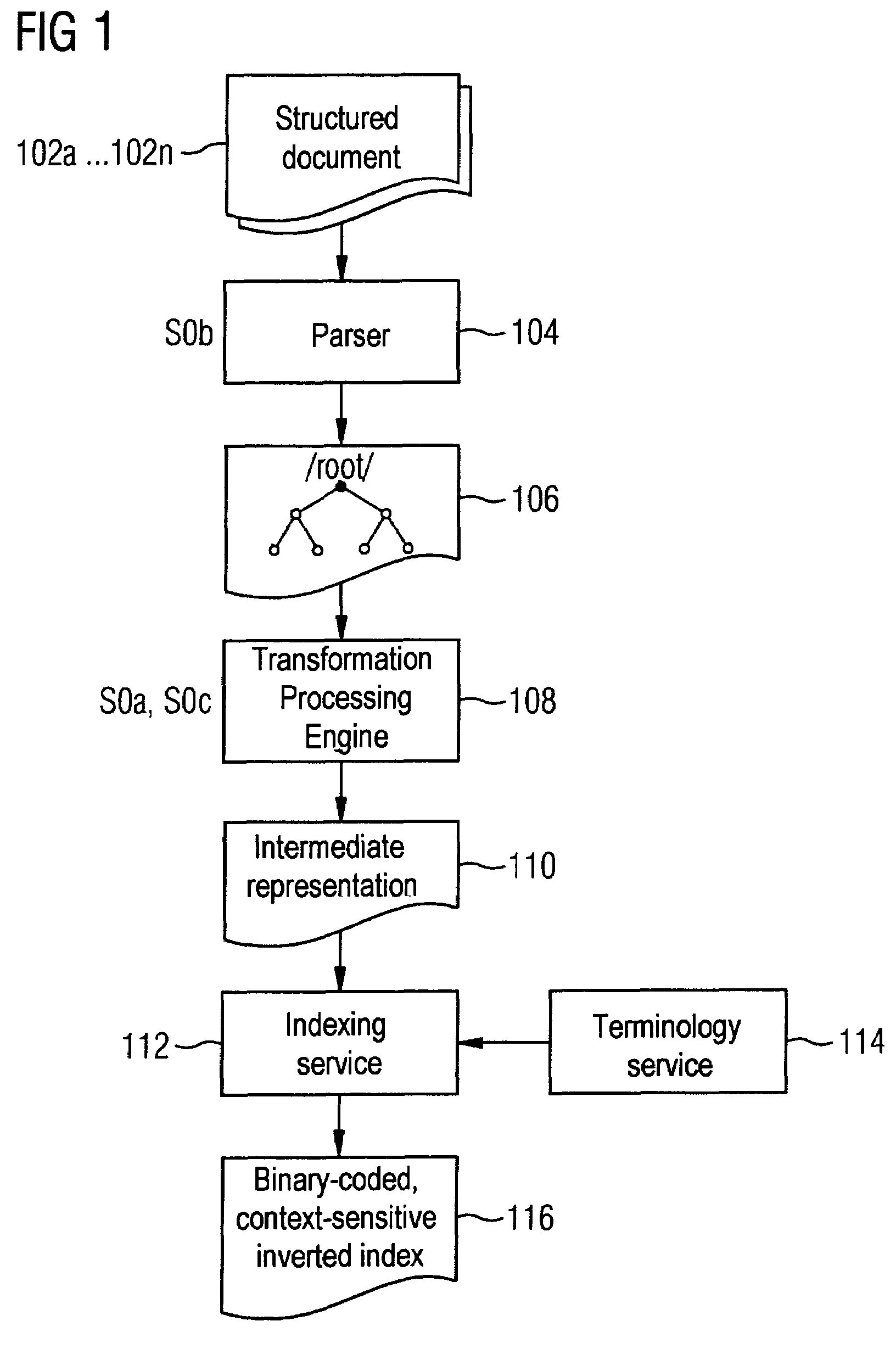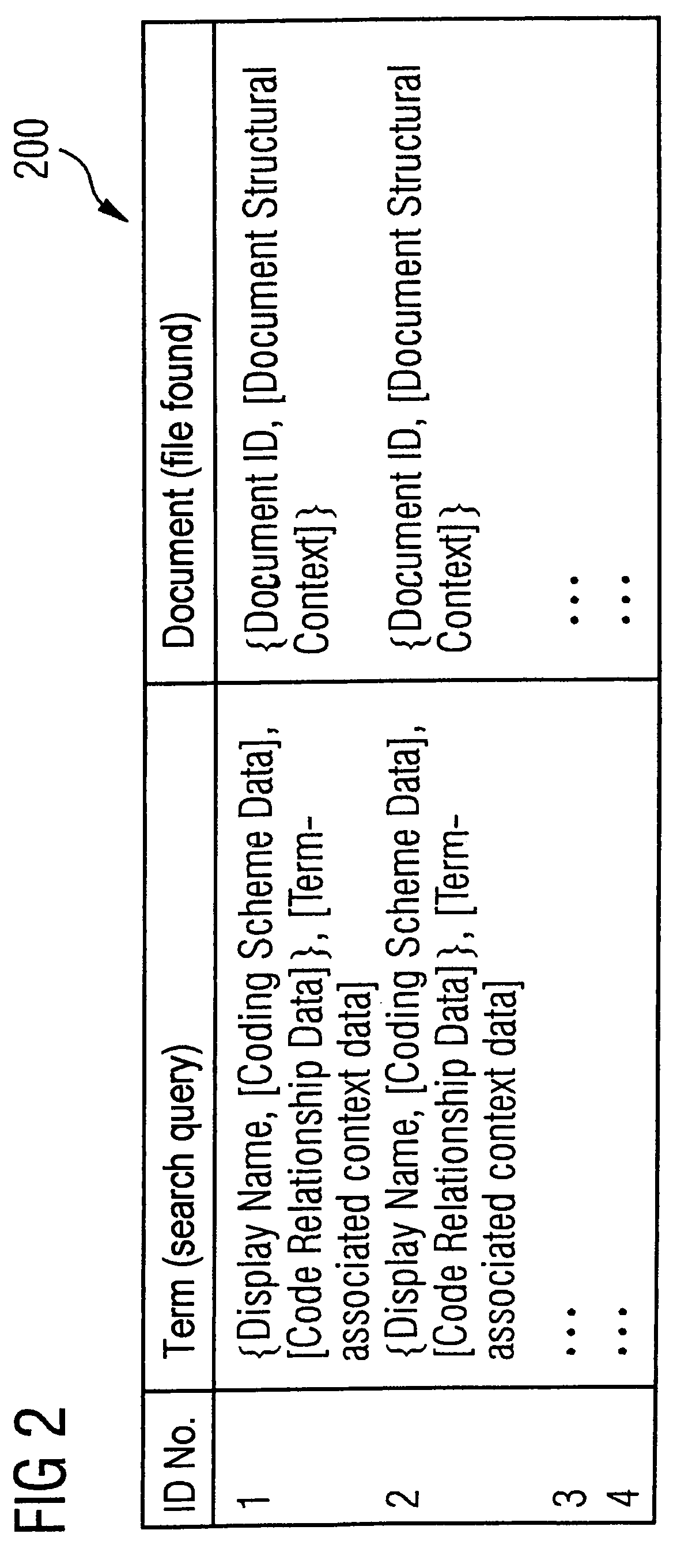Automatic indexing of digital image archives for content-based, context-sensitive searching
a digital image and context-sensitive technology, applied in the field of data archive indexing, to achieve the effect of improving the precision of the image and document retrieval method used for searching for relevant documents
- Summary
- Abstract
- Description
- Claims
- Application Information
AI Technical Summary
Benefits of technology
Problems solved by technology
Method used
Image
Examples
Embodiment Construction
[0053]The text below gives a more detailed description of the steps in an embodiment of the inventive method and of the functions of the system components contained in an exemplary embodiment of the underlying invention, as depicted in FIGS. 1 and 3. The meaning of the symbols provided with reference numerals in FIGS. 1 to 4 can be taken from the appended list of reference numerals.
[0054]A first exemplary embodiment of the present invention relates to the method illustrated in FIGS. 1 and 3 for automatically indexing multimedia data archives 304c and categorizing the files 102a-n stored therein. This method allows a content-based search for relevant files 102i in at least one particular format and having at least one particular file structure and also for image files (B1, . . . , BN) which are referenced by these files and are stored in a digital image database 304a.
[0055]When a user sends a query (S1) to the document management system 304 for the purpose of searching for relevant ...
PUM
 Login to View More
Login to View More Abstract
Description
Claims
Application Information
 Login to View More
Login to View More - R&D
- Intellectual Property
- Life Sciences
- Materials
- Tech Scout
- Unparalleled Data Quality
- Higher Quality Content
- 60% Fewer Hallucinations
Browse by: Latest US Patents, China's latest patents, Technical Efficacy Thesaurus, Application Domain, Technology Topic, Popular Technical Reports.
© 2025 PatSnap. All rights reserved.Legal|Privacy policy|Modern Slavery Act Transparency Statement|Sitemap|About US| Contact US: help@patsnap.com



